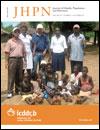Challenge of Reducing Perinatal Mortality in Rural Congo: Findings of a Prospective, Population-based Study
DOI:
https://doi.org/10.3329/jhpn.v29i5.8908Keywords:
Neonatal mortality, Observational studies, Perinatal mortality, Population-based studies, Prospective studies, Stillbirths, CongoAbstract
Each year, an estimated six million perinatal deaths occur worldwide, and 98% of these deaths occur in low- and middle-income countries. These estimates are based on surveys in both urban and rural areas, and they may underrepresent the problem in rural areas. This study was conducted to quantify perinatal mortality, to identify the associated risk factors, and to determine the most common causes of early neonatal death in a rural area of the Democratic Republic of the Congo (DRC). Data were collected on 1,892 births. Risk factors associated with perinatal deaths were identified using multivariate analysis with logistic regression models. Causes of early neonatal deaths were determined by physician-review of information describing death. The perinatal mortality rate was 61 per 1,000 births; the stillbirth rate was 30 per 1,000 births; and the early neonatal death rate was 32 per 1,000 livebirths. Clinically-relevant factors independently associated with perinatal death included: low birthweight [odds ratio (OR)=13.51, 95% confidence interval (CI) 7.82-23.35], breech presentation (OR)=12.41; 95% CI 4.62-33.33), lack of prenatal care (OR=2.70, 95% CI 1.81-4.02), and parity greater than 4 (OR=1.93 95% CI 1.11-3.37). Over one-half of early neonatal deaths (n=37) occurred during the first two postnatal days, and the most common causes were low birthweight/prematurity (47%), asphyxia (34%), and infection (8%). The high perinatal mortality rate in rural communities in the DRC, approximately one-half of which is attributable to early neonatal death, may be modifiable. Specifically, deaths due to breech presentation, the second most common risk factor, may be reduced by making available emergency obstetric care. Most neonatal deaths occur soon after birth, and nearly three-quarters are caused by low birthweight/prematurity or asphyxia. Neonatal mortality might be reduced by targeting interventions to improve neonatal resuscitation and care of larger preterm infants.
Key words: Neonatal mortality; Observational studies; Perinatal mortality; Population-based studies; Prospective studies; Stillbirths; Congo
DOI: http://dx.doi.org/10.3329/jhpn.v29i5.8908
JHPN 2011; 29(5): 532-540
Downloads
988
810

